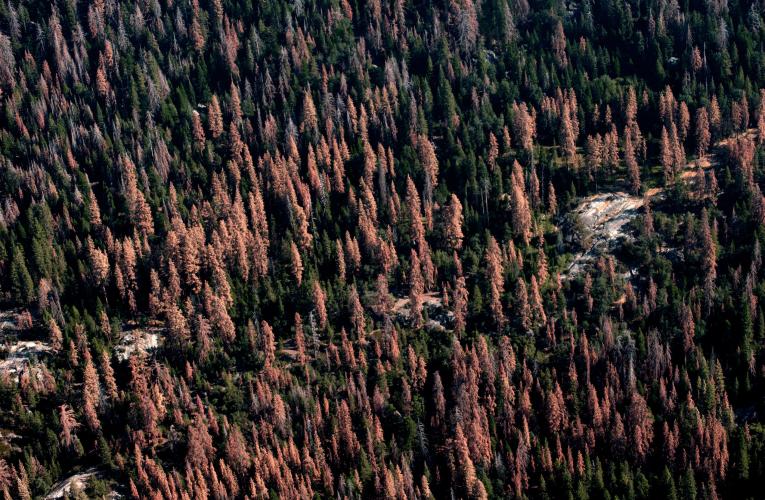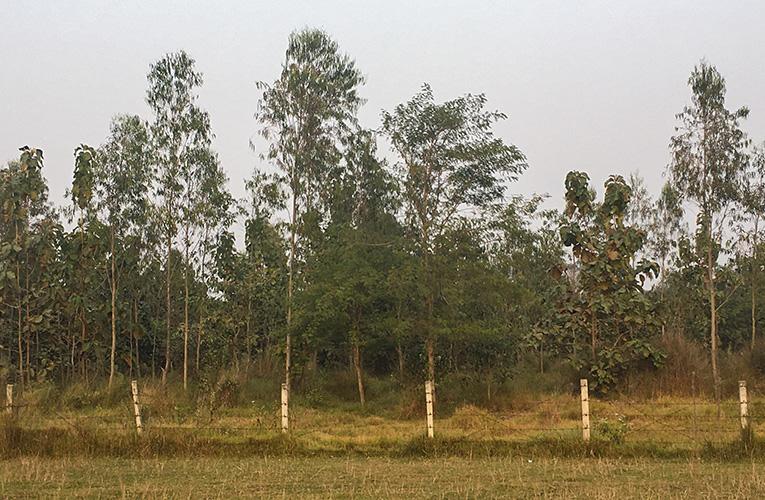Tim Lucas
(919) 613-8084
tdlucas@duke.edu
DURHAM, N.C. – Predicting if droughts and heat waves will kill forests is difficult, but new work by scientists and engineers at Duke, Princeton, Stanford and the University of Alabama (UA) could help scientists spot problems early enough that they can still mitigate the threats and help restore at-risk forests.
Using data gathered from publicly available satellite and aerial imagery from drought-stressed forests in California, the researchers found that loss of resilience – manifested by slower than normal growth and recovery in a stressed tree – is an indicator that the tree is approaching a tipping point.
When analyzed by a specially developed model the team created, this data can provide an early warning signal to alert scientists of impending mortality by as much as six to 19 months before forests actually pass the point of no return.
"The main contribution of this work is the derivation of a new early warning signal for predicting climate-stress-induced forest mortality," said Mukesh Kumar, co-author of the paper and associate professor of civil, construction and environmental engineering at UA. "The early warning signal identifies trees that are about to die under prevailing climatological conditions."
Kumar and his colleagues published their peer-reviewed paper Oct. 7 in Nature Climate Change.
The work was led by Yanlan Liu, Kumar's former doctorate student at Duke University’s Nicholas School of the Environment. Liu is currently a postdoctoral researcher at Stanford University’s School of Earth, Energy and Environmental Sciences.
“Forest mortality from droughts is being widely observed across the globe. To assess the risks and devise mitigation and restoration strategies, we need to be able to predict forest mortality ahead of time. Until now, that’s been difficult to do using physiological models because of the complexity of the mortality process, acclimation of vegetation properties, and uncertainties originating from lack of data. Our work addresses these challenges by identifying an early warning signal, or EWS, that identifies dying forests ahead of time,” Liu said.
The team was able to detect a stressed tree’s “slow recovery” by tracking a time-varying autocorrection signal in Landsat satellite data using a new stochastic model of vegetation dynamics. The data spans a period from 1999 to 2015, which includes two major droughts in California, said Gabriel G. Katul, Theodore S. Coile Professor of Hydrology and Micrometeorology at Duke’s Nicholas School.
“This method detects EWS while accounting for intrinsic stochastic noise and seasonality, and avoids false alarms that arise from artifacts or increasingly auto-correlated climate conditions,” Katul explained.
Although the data used to develop the new EWS system was based on California forests, the system has wide applicability, the scientists said.
“The framework we are presenting can potentially be applied for live monitoring of forest health under drought in other regions of the world. Understanding forest-mortality risk is especially important to assess the robustness of afforestation and forest-protection efforts for CO2 mitigation,” said Amilcare Porporato, Thomas J. Wu ’94 Professor of Civil and Environmental Engineering and the Princeton Environmental Institute at Princeton University.
"The lead time of EWS will allow forest managers to assess resource risks and possibly prescribe approaches to mitigate insect and fire risks, and restore stand health through prescribed burning, variable density thinning and altering age structure and species composition," added Kumar.
The team’s work was funded by grants from the National Science Foundation.
In addition to their current appointments at UA and Princeton, Kumar and Porporato both hold adjunct faculty positions at Duke.
CITATION: “Reduced Resilience as an Early Warning Signal of Forest Mortality,” Yanlan Liu, Mukesh Kumar, Gabriel G. Katul and Amilcare Porporato. Nature Climate Change, Oct. 7, 2019. DOI: https://doi.org/10.1038/s41558-019-0583-9
Editor’s note: This story is adapted from a news release produced by the University of Alabama in Tuscaloosa.




